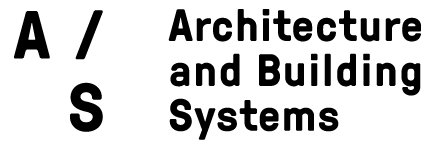InduCity
Duration /
2012-2014
Funding /
Swiss Commission on Technology and Innovation (CTI)
A/S Team /
J. Fonseca, A. Willmann, D. Thomas, A. Schlueter
Key Partners /
Prof. Dr. R. Scholz, Dr. Michael Stauffacher (USYS, IED, NSSI – ETH Zurich)
Prof. C. Wirz (UMTEC, WERZ Zug, FH Rapperswil)
Siemens Building Technologies, Zug
Siemens Corporate Research, Princeton
Selected Publications /
1 / J. Fonseca, A. Schlueter. "Integrated Model for Characterization of Spatiotemporal Building Energy Consumption Patterns in Neighborhoods and City Districts," in: Applied Energy 142 (2015): 247–65. DOI Research Collection
2 / J. Fonseca, A. Willmann, C. Moser, M. Stauffacher, A. Schlueter. "Assessing the Environmnetal Impact of Future Urban Developments at Neighborhood Scale," Paper presented at the CISBAT 2015 International Conference cleantech for smart cities and buildings, Lausanne, Switzerland, September 9-11, 2015. DOI Research Collection
3 / J. Fonseca, A. Schlueter. "Method and Data Analysis For Assessment of local Energy Potentials for Urban Transformation: Case Study of a mixed use City Quarter," Paper presented at the CISBAT 2013 International Conference cleantech for smart cities and buildings, Lausanne, Switzerland, September 4-6, 2013. Research Collection
The transdisciplinary project 'InduCity – Software-based, sustainable Transformation of an Industrial Area' utilized building and urban data analysis for the development of a novel, abstract urban energy model by assessing of local energy potentials for the transformation of a mixed-use city quarter, identifying and evaluating plausible infrastructural and building retrofit measures under the framework of the Swiss 2000-watt society.
In this light, the Siemens area in Zug functioned as a case study and provided an insight into both the prospects and barriers of implementing the 2000 watt/1 ton CO2 society in industrial areas. The challenge lied in the transformation of a former industrial site into a heterogeneous city quarter while retaining current production on site. The A/S Research Group focused on the allocation of site energy and systems data, the analysis of renewable energy potentials and the research of optimal retrofit strategies addressing both district energy systems as well as building retrofit.
Using co-simulation, district energy systems were simulated; the results of both were used to define urban development strategies together with aspects of mobility and production processes on the site. As part of the project and in a dedicated summer school, different scenarios of urban development and design were explored. They supported the assessment of significant impacts on the community and conclusively conveyed transferrable methodologies that were integrated into a new rapid urban design and simulation tool ‘City Lifecycle Manager’ (CLM) for modeling, calculation and visualization. CLM was developed in collaboration with Siemens Corporate Research. Thus, the industrial area of Zug represented a pilot study for the development and application of consultancy software on area transformations.

